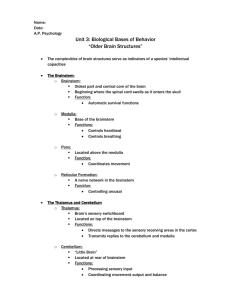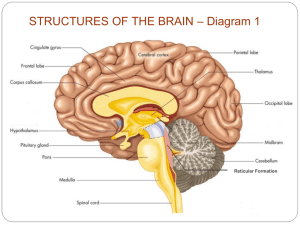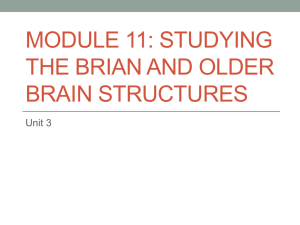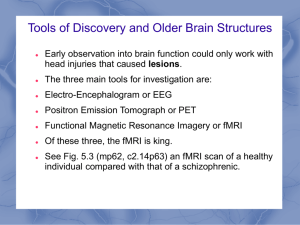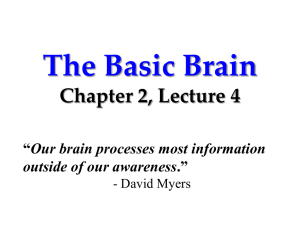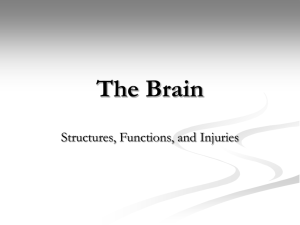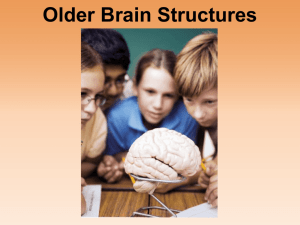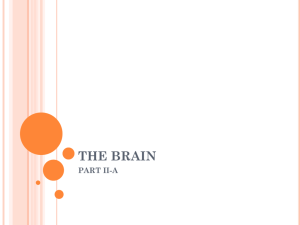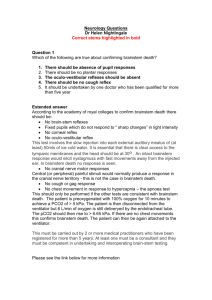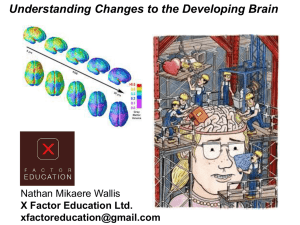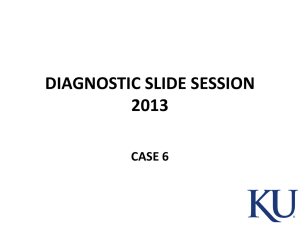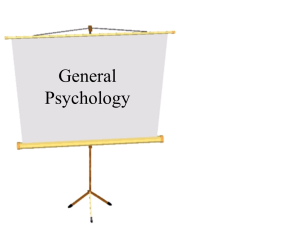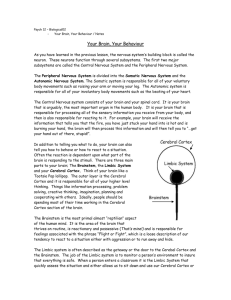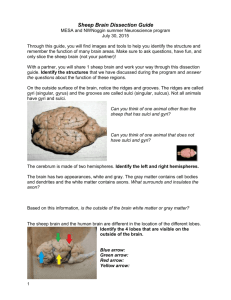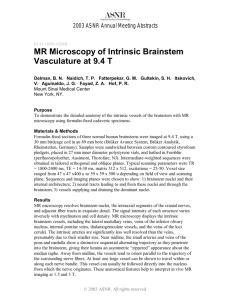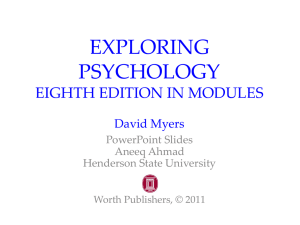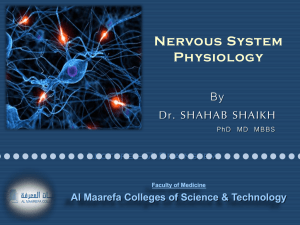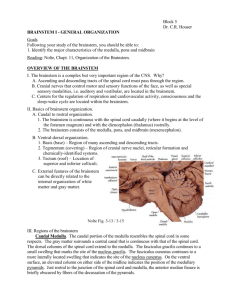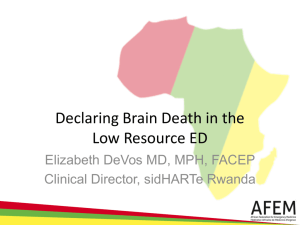Tools of Discovery and Older Brain Structures
advertisement
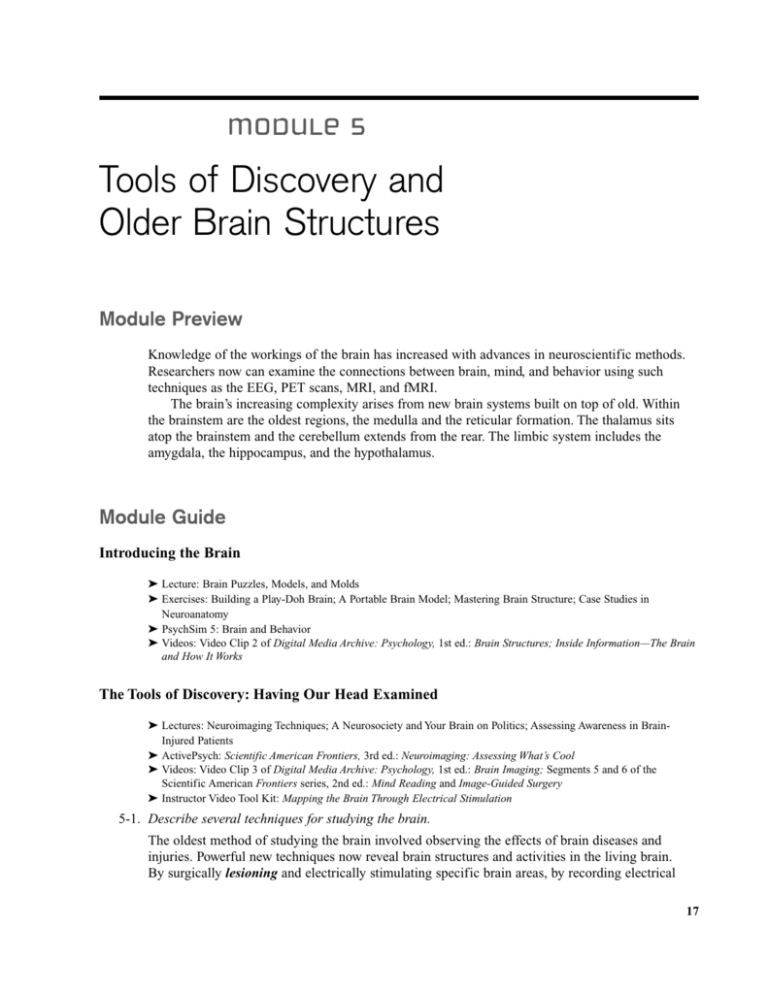
Tools of Discovery and Older Brain Structures Knowledge of the workings of the brain has increased with advances in neuroscientific methods. Researchers now can examine the connections between brain, mind, and behavior using such techniques as the EEG, PET scans, MRI, and fMRI. The brain’s increasing complexity arises from new brain systems built on top of old. Within the brainstem are the oldest regions, the medulla and the reticular formation. The thalamus sits atop the brainstem and the cerebellum extends from the rear. The limbic system includes the amygdala, the hippocampus, and the hypothalamus. Introducing the Brain ➤ Lecture: Brain Puzzles, Models, and Molds ➤ Exercises: Building a Play-Doh Brain; A Portable Brain Model; Mastering Brain Structure; Case Studies in Neuroanatomy ➤ PsychSim 5: Brain and Behavior ➤ Videos: Video Clip 2 of Digital Media Archive: Psychology, 1st ed.: Brain Structures; Inside Information—The Brain and How It Works The Tools of Discovery: Having Our Head Examined ➤ Lectures: Neuroimaging Techniques; A Neurosociety and Your Brain on Politics; Assessing Awareness in BrainInjured Patients ➤ ActivePsych: Scientific American Frontiers, 3rd ed.: Neuroimaging: Assessing What’s Cool ➤ Videos: Video Clip 3 of Digital Media Archive: Psychology, 1st ed.: Brain Imaging; Segments 5 and 6 of the Scientific American Frontiers series, 2nd ed.: Mind Reading and Image-Guided Surgery ➤ Instructor Video Tool Kit: Mapping the Brain Through Electrical Stimulation 5-1. Describe several techniques for studying the brain. The oldest method of studying the brain involved observing the effects of brain diseases and injuries. Powerful new techniques now reveal brain structures and activities in the living brain. By surgically lesioning and electrically stimulating specific brain areas, by recording electrical 17 18 Module 5 Tools of Discovery and Older Brain Structures activity on the brain’s surface (EEG), and by looking inside the living brain to see its activity (PET, MRI, and fMRI), neuroscientists examine the connections between brain, mind, and behavior. ➤ Lecture: Why Can’t We Tickle Ourselves? ➤ Exercise: Individual Differences in Physiological Functioning and Behavior ➤ Videos: Discovering Psychology, Updated Edition: The Behaving Brain; Module 1 of The Brain series, 2nd ed.: Organization and Evaluation of Brain Function 5-2. Describe the components of the brainstem, and summarize the functions of the brainstem, thalamus, and cerebellum. The brainstem, the brain’s oldest and innermost region, is responsible for automatic survival functions. It includes the medulla, which controls heartbeat and breathing, and the reticular formation, which plays an important role in controlling arousal. Atop the brainstem is the thalamus, the brain’s sensory switchboard. It receives information from all the senses, except smell, and sends it to the higher brain regions that deal with seeing, hearing, tasting, and touching. The cerebellum, attached to the rear of the brainstem, coordinates movement output and balance and helps process sensory information. It also enables one type of nonverbal learning and memory and helps us judge time, modulate our emotions, and discriminate sounds and textures. ➤ Lecture/Video: The Case of Clive Wearing ➤ ActivePsych: Digital Media Archive, 2nd ed.: The Brain’s Reward Center ➤ Videos: Module 6 of The Mind series, 2nd ed.: Brain Mechanisms of Pleasure and Addiction; Video Clip 26 of Digital Media Archive: Psychology, 1st ed.: Self-Stimulation in Rats ➤ Instructor Video Tool Kit: Compulsive Gambling and the Brain’s Pleasure Center 5-3. Describe the structures and functions of the limbic system, and explain how one of these structures controls the pituitary gland. The limbic system has been linked primarily to memory, emotions, and drives. For example, one of its neural centers, the hippocampus, processes memory. Another, the amygdala, influences aggression and fear. A third, the hypothalamus, has been linked to various bodily maintenance functions and to pleasurable rewards. Its hormones influence the pituitary gland, and thus it provides a major link between the nervous and endocrine systems.
